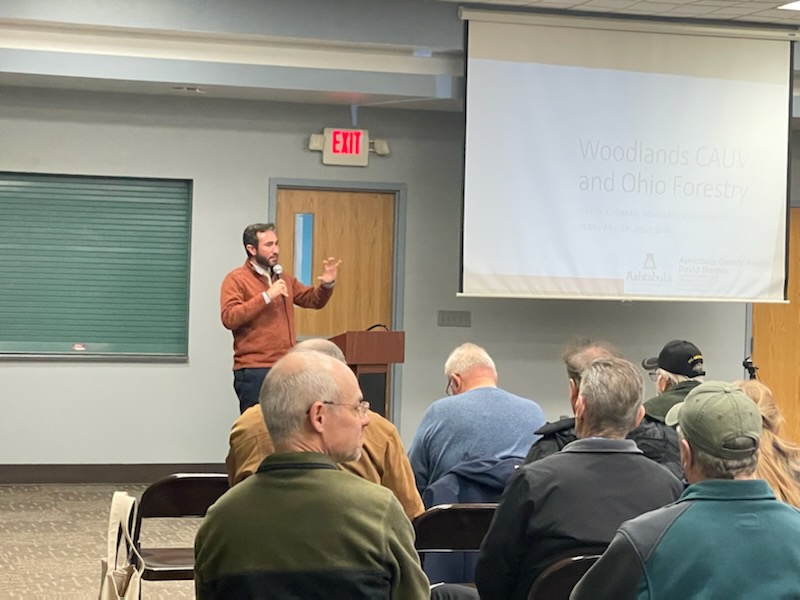Video and Info from the CAUV Forestry Session
Watch the video from our February 24th Educastion Session on CAUV Woodlands, Ohio Forest Tax Law, and the answering of questions on these programs.
Read the Power Point from our Education Session.
Check out an info sheet on the difference between Ohio Forest Tax Law and CAUV Woodlands.
Visit the Auditor's CAUV Info site

Auditor’s Forestry Education Session a Success
Jefferson- Fifty property owners spent a cold and icey evening with the Ashtabula County Auditor’s Office and representatives from other agencies learning about forestry tax programs this past week. The savings of these programs, anywhere between 50-95% of owner’s property taxes according to County Auditor David Thomas, was a big reason his office has been spreading the word.
The evening was focused on properties with woodlands and those interested in managing forests of over 10 acres in size. The two tax savings programs discussed were the Current Agricultural Use Valuation (CAUV) Woodland Program managed by the Auditor’s Office and the Ohio Forest Tax Law Forestry Program managed by the Ohio Division of Forestry.
“Our goal is to not only get folks the tax credits they deserve, but also preserve a vital environmental and economical asset in our county’s woodlands,” shared Auditor Thomas.
Heather Hall, CAUV specialist with the Auditor’s Office and John Kehn, Service Forestry Coordinator with the Ohio Division of Forestry, explained both programs and the requirements for property owners to apply and receive the tax incentives.
Entry into these opportunities takes three basic things they shared. First, having 10 acres or more of woodlands. Then, having a forest management plan which details the timing of responsible logging and management of the land. And finally, the physical upkeep and following of the plan to include removal of invasive species, selective cutting and planting, and ultimately responsible harvesting of the timber crop.
“Both programs have pros and cons which we have easily available on our website along with other information,” said Auditor Thomas. “The key is becoming educated and learning about what is best for your property.”
Woodlands is the fastest growing tax credit which property owners are being enrolled in over the past several years. Thomas attributes this to more education, a better economic output from responsible timbering, and the growing tax savings.
Parcels on CAUV woodland are taxed at the lowest possible value which is $230 an acre. This is significantly lower than most market values in Ashtabula County for woodlands which Thomas explains are between $2,000 to more than $10,000 an acre.
Also present at the education session was Ohio Farm Bureau Northeast Counties’ Director Mandy Orahood. Orahood shared work the Farm Bureau is doing with their legislative priorities to end a carve out in Ohio law which does not permit properties in the CAUV Woodlands or Ohio Forest Tax Law programs to receive a non-business credit of a 10% tax reduction. The Farm Bureau believes this is an unfair treatment of woodland owners as traditional farmers and agriculture producers can receive the non-business credit.
“Due to our membership’s push at the local level to encourage this change in policy, Ohio Farm Bureau made the non-business credit issue a legislative priority in December and we’ve been excited to have Rep. Fowler Arthur and Auditor Thomas working to make it a reality for our farmers,” stated Mandy Orahood.
Those who missed the session, but would like to learn about these opportunities can read more at the Ashtabula County Auditor’s website or contact Heather Hall at 440-576-3788. CAUV applications and renewals are due by Tuesday, March 1 to the Auditor’s Office.
4184